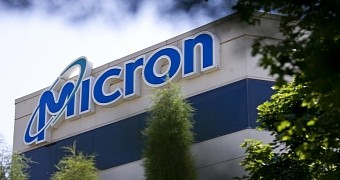Micron takes on HBM (High Bandwidth Memory) technology by offering its third-generation emerging HMC (Hybrid Memory Cube) memory technology.
Micron isn't the sort of company you own by throwing billions of dollars at it. Micron is the sort of company you grow and then use it as a national asset by investing in it to keep developing cutting-edge technologies.
At the moment, there are very few companies in the world that represent the absolute spearhead in wafer and memory chip research, and Micron is among them.
While developing, together with Intel, a new non-volatile V-NAND memory technology called 3D Xpoint that vastly overtakes any existing NAND memories thanks to its next-generation, and beyond, PCIe connectivity and memory layout, Micron revealed its 3rd generation HMC technology that doubles the rate of the memory from 15Gb/s today.
Using advanced through-silicon vias (TSVs) that are tiny silicon rods that pierce through stacks of individual chips, HMC tech combines the company's high-performance logic with Micron’s dynamic random access memory. At the moment, Micron offers 2GB and 4GB HMC devices based on 4Gb DRAM dies with up to 15Gb/s data rates and up to 160GB/s peak bandwidth per stack. You can imagine that third-gen HMC will reach at least double that performance.
HMC and HBM memory technologies will compete from different perspectives
The reason to push the third generation forward is the advent of HBM 2 memory technology from SK Hynix that, although at first similar in design, uses a very different building method. While HBM uses an ultra-wide interface to communicate between layered memory chips, the Micron's HMC features up to 16-bit serial interconnect operating at a very high clock-rate.
The need to reach a third-generation HMC memory stack technology is because HBM2 already shows enormous potential compared to present-day HMC tech. Maximum bandwidth supported by one HBM chip is up to 128GB/s while second-generation HBM will have bandwidth of up to 256GB/s.
According to HPC Wire, Micron plans to introduce the new HMC memory technology in its future DRAM memory kits that will allow much greater frequencies, while also permitting greater overclocking scaling that will keep up the pace with multiple CPU cores.
Right now, HBM availability and popularity is infinitely vaster and more widely known or used than Micron's HMC since existing graphics cards like AMD's Fury series use it and future NVIDIA Pascal GPUs will carry it, as well. For professional and corporate use, HMC could be a more useful memory technology if they have the money to buy it.

 14 DAY TRIAL //
14 DAY TRIAL //